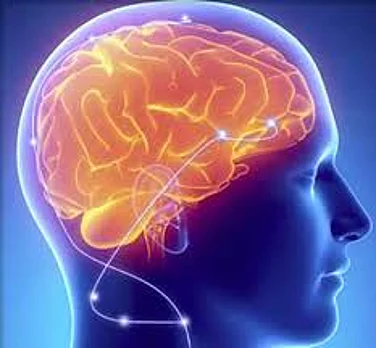The ambitious National Sickle Cell Anaemia Elimination Mission, launched by Prime Minister Narendra Modi in Shahdol, Madhya Pradesh, on July 1, 2023, has uncovered a significant public health challenge: Of 6 crore people screened for the Sickle cell, over 18.85 lakh individuals across India have been identified as either suffering from the genetic blood disorder or carrying the sickle cell trait.
The Union Health Ministry data provided recently shows that among those screened, 2.15 lakh individuals have been diagnosed with sickle cell disease, while 16.7 lakh are carriers of the sickle cell trait, a condition that does not cause illness but can be passed to offspring.
The mission targets universal screening of seven crore individuals aged 0–40 years in tribal and high-burden districts by the end of the fiscal year 2025-26. The six crore people nationwide have been screened through validated Point-of-Care Testing (POCT) kits that facilitate rapid and confirmatory diagnosis. To aid in monitoring and follow-up, States have issued 2.6 crore health cards to individuals identified through the programme.
Sickle cell disease, a group of inherited blood disorders affecting haemoglobin—the protein responsible for oxygen transport in red blood cells—poses a chronic health risk, especially in tribal populations where the prevalence is highest. The disease causes red blood cells to adopt a sickle shape, leading to blockages in blood flow, severe pain, organ damage, and potentially fatal complications.
Speaking on the milestone achieved under the Mission, Dr. Nita Radhakrishnan, a senior hematologist (pediatrics department) at Super Speciality Paediatric Hospital & Post Graduate Teaching Institute in Noida noted, “Crossing the six crore mark in screening is a transformative achievement in India’s public health landscape. Sickle cell anaemia remains a major concern among tribal and socio-economically disadvantaged groups in states such as Maharashtra, Madhya Pradesh, Chhattisgarh, Odisha, Jharkhand, and Gujarat, where over 20 million people are estimated to carry the sickle cell trait.”
She elaborated, “Without early diagnosis and access to comprehensive care, SCD can result in severe complications, diminished quality of life, and premature death. However, timely screening coupled with genetic counselling, preventive care, and treatment can significantly improve outcomes for affected individuals.”
Dr. Nita Radhakrishnan added, “This initiative is not merely about numbers screened, but about ensuring that those diagnosed receive continuous support and follow-up, a critical step towards reducing the disease burden across vulnerable communities.”
“Detection alone is not sufficient,” agreed Lt Dr. C.B.S. Dangi, Nodal Head of the Sickle Cell and Thalassemia Elimination Programme, NCC Directorate (MP and Chhattisgarh), with over two decades of research experience in haemoglobinopathies.
“There must be increased efforts to raise awareness about genetic testing and provide comprehensive genetic counselling to carriers so they understand their status and reproductive options. In other words, unless we break the gene transfer, we will not be able to eliminate this genetic disorder. And we will be into the vicious cycle of the disease,” he said matter-of-factly.
Dr. Dangi stressed that “mandatory prenatal and antenatal testing for carriers to break the gene passage is essential if India is serious about eliminating this debilitating condition.”
Dr. Dangi also drew attention to demographic changes influencing disease prevalence. “Migration from regions with high SCD prevalence States like Madhya Pradesh and Chhattisgarh to metros like Delhi and Bangaluru and beyond is normal. This has led to rising numbers of affected individuals in areas previously unfamiliar with the disease.“
In this connection, he shared that the Madhya Pradesh and Chattishgarh NCC Directorate in collaboration with the National Health Mission under the State Health Ministry has started a programme under which interested NCC cadets have been nominated as Sickle Cell Mitras who create awareness about this genetic disorder in their respective regions. This concept is proving successful and can be adopted pan-level too, Dr. Dangi suggested.
Within India, the highest numbers of diagnosed SCD cases have emerged from Odisha, Chhattisgarh, Madhya Pradesh, Maharashtra, and Gujarat, pointing to significant disease clusters in these states. Meanwhile, Madhya Pradesh, Gujarat, Rajasthan, Telangana, Karnataka, and Uttarakhand have made remarkable strides in achieving their screening targets.
To improve coordination and data management across States, a centralised digital dashboard and SCD portal have been established, consolidating screening data and facilitating targeted interventions.
Key facts
Sickle Cell Disease (SCD) is a group of inherited blood disorders that affect red blood cells. It is marked by the presence of abnormal hemoglobin, the protein responsible for carrying oxygen throughout the body. This abnormal form, known as hemoglobin S, causes red blood cells to become rigid and crescent- or "sickle"-shaped. These misshapen cells can obstruct blood flow and lead to various health complications.
Causes:
SCD is caused by mutations in the genes responsible for producing hemoglobin.
Individuals inherit one mutated gene from each parent.
People with sickle cell trait inherit one normal gene and one sickle cell gene. They are carriers and usually do not experience symptoms.
Symptoms:
Pain (vaso-occlusive crises): Blocked blood flow can lead to episodes of severe, sudden pain.
Anemia: Sickle cells die earlier than normal red blood cells, leading to a chronic shortage.
Jaundice: Yellowing of the skin and eyes due to excess bilirubin from rapid breakdown of sickled cells.
Swelling (dactylitis): Painful swelling of the hands and feet, often an early sign in infants.
Other symptoms: Fatigue, shortness of breath, rapid heartbeat, and signs of organ stress or damage.
Impact on the Body:
Impaired circulation: Sickled cells can block blood vessels, reducing oxygen delivery to tissues.
Organ damage: The spleen, liver, kidneys, lungs, and other organs may be affected over time.
Increased infection risk: The spleen is often damaged or underactive, especially in children, making infections more likely.
Treatment Options:
Medications: Pain relievers for managing crises.
Hydroxyurea to stimulate production of fetal hemoglobin, which reduces sickling.
Other drugs to lower the risk of complications.
Blood transfusions: Increase healthy red blood cell count and reduce stroke risk.
Bone marrow (stem cell).






















